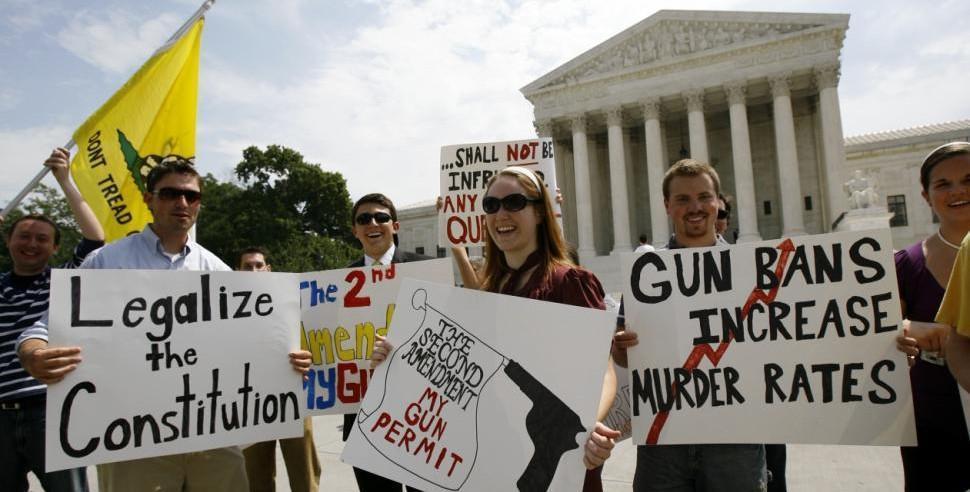Even before the death of Antonin Scalia, lower courts and policymakers were operating in limbo on significant issues such as assault weapons bans. Here is in depth look at the four big gun rights issues the court now faces.
The Trace is an independent, nonprofit media organization dedicated to expanding coverage of guns in the United States. The following analysis was written for The Trace by Olivia Li.
President Barack Obama met with Senate Majority Leader Mitch McConnell and Judiciary Committee Chairman Charles Grassley in the Oval Office on Tuesday to discuss a contentious issue: his plans to replace the late Justice Antonin Scalia on the Supreme Court. The meeting was the latest round in a campaign to compel McConnell to allow the Senate to consider a nominee this year, an effort in which Obama and his aides have tried to crack Republican obstruction by invoking the wisdom of one of the party’s icons. In 1988, after two of Ronald Reagan’s nominees were rejected by the Senate, Reagan warned about the consequences for the country should the seat continue to go unfilled, saying, “Every day that passes with the Supreme Court below full strength impairs the people’s business in that crucially important body.” It’s a line that the Obama team has been echoing a lot.
The stakes for the fight over Scalia’s replacement are undeniably high. But on Second Amendment issues specifically, policymakers and courts already often found themselves operating in limbo before Scalia died — and had been since 2008. That was the year that the Supreme Court, with Scalia writing for the majority, affirmed the right to bear arms for all individuals in District of Columbia v. Heller.
While his ruling was a monumental win for gun rights advocates, Scalia also used the opinion to caution that the boundaries of the Second Amendment remain unfixed, and could only be set by decisions in future cases. “[S]ince this case represents this court’s first in-depth examination of the Second Amendment, one should not expect it to clarify the entire field,” he wrote.
In the years since, lower courts have tried to figure out how far gun regulations can go without stepping on the toes of the Second Amendment. Their conclusions have been the most significantly divided on four particular questions. And since the Supreme Court has declined to hear an overwhelming majority of the Second Amendment cases brought since Heller, the lower courts and the lawmakers who take guidance from them could spend years wrangling with those matters without any firm guidance from the Supreme Court — no matter who eventually assumes Scalia’s former seat.
Continue reading on The Trace


